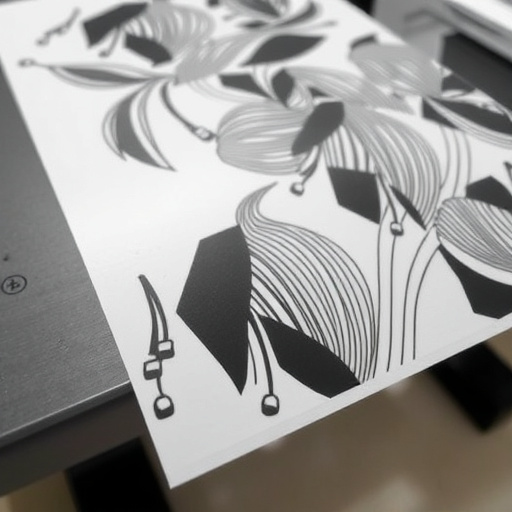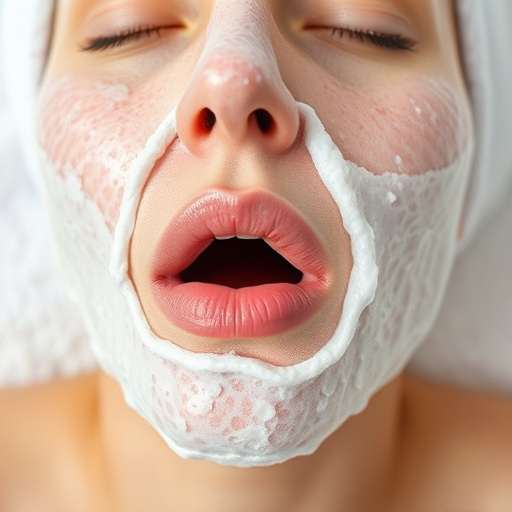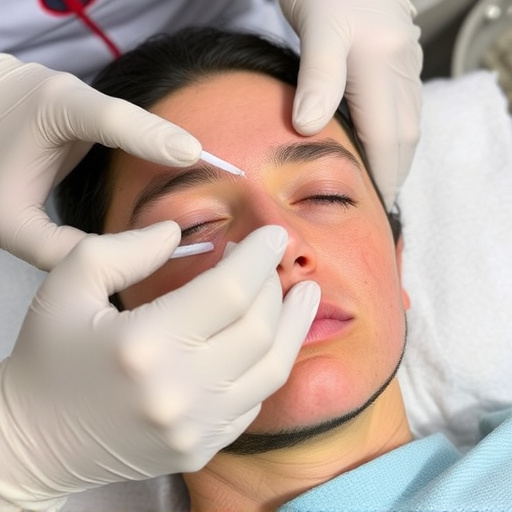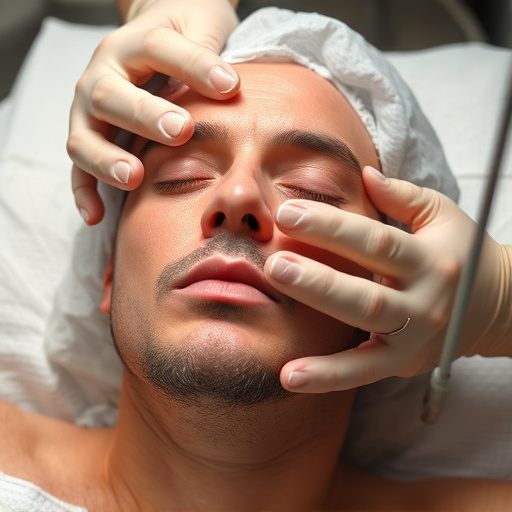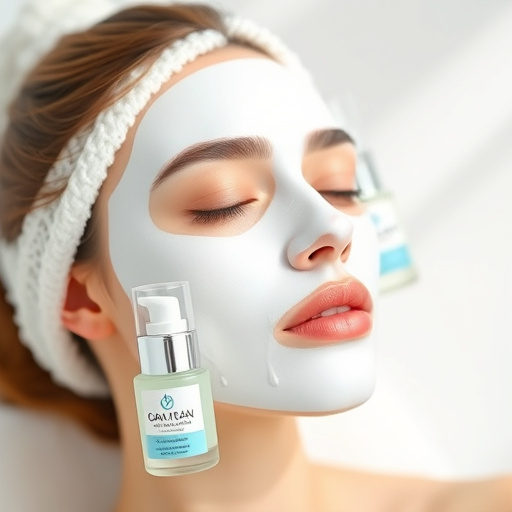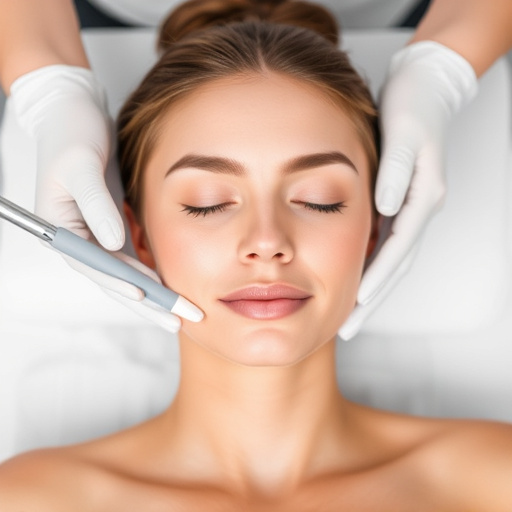Razor bump treatment involves addressing irritated hair follicles caused by shaving or waxing with topical creams, antibiotics, microdermabrasion, chemical peels, or laser treatments. Long-term prevention includes gentle exfoliation, close shaves, regular hydrating facials, and laser hair removal for permanent results, focusing on proper skincare techniques.
Are you tired of dealing with painful, itchy razor bumps after shaving? This comprehensive guide offers a deep dive into razor bump treatment and prevention. We explore the science behind these pesky bumps, uncovering common causes like improper shaving techniques and skin sensitivity. Next, we present effective treatments for rapid relief, from topical creams to natural remedies. Finally, discover long-term prevention strategies, including expert tips on shaving routines and hair removal methods, ensuring smooth, bump-free skin.
- Understanding Razor Bumps: Causes and Impact
- Effective Treatment Options for Rapid Relief
- Long-term Prevention Strategies: Tips and Tricks
Understanding Razor Bumps: Causes and Impact
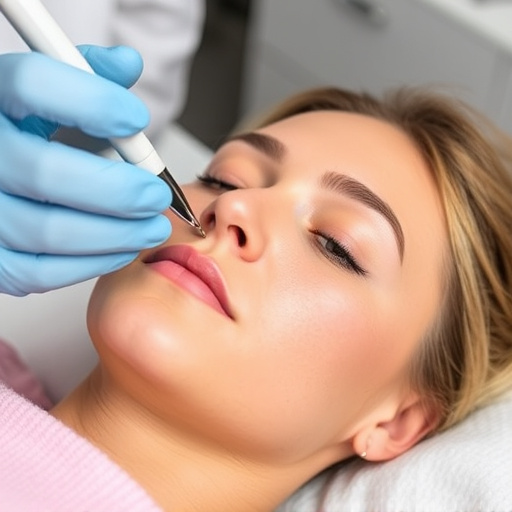
Razor bumps, also known as pseudofolliculitis barbae, are a common skin concern that arises from shaving or waxing. They occur when the edge of a razor blade irritates and inflames a hair follicle, leading to a raised, red bump often accompanied by itching or burning sensations. This condition can impact any area of the body where hair grows back through the skin, but it’s most prevalent in facial hair growth.
The primary cause of razor bumps is the way hair is removed. When hair is shaved too closely or at an angle, it can curl back under the skin, trapping the follicle and causing inflammation. This is further exacerbated by the friction and heat generated during shaving. Over time, chronic irritation can result in scar tissue formation and permanent damage to the hair follicles, leading to more frequent and severe razor bump outbreaks. Understanding these causes is crucial for developing effective strategies, including exploring anti-aging treatments and skin brightening solutions that go beyond basic razor bump treatment.
Effective Treatment Options for Rapid Relief
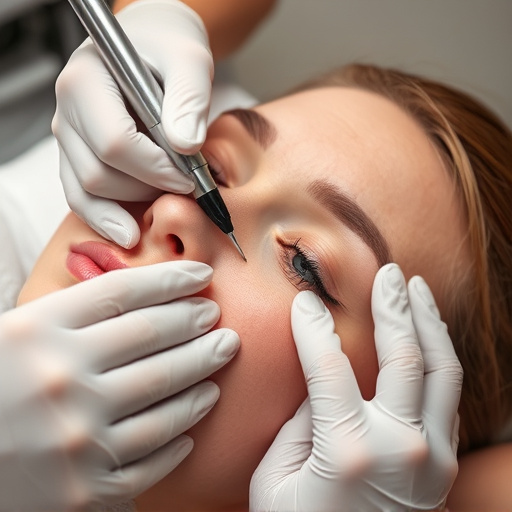
When it comes to effective razor bump treatment, there are several options that can provide rapid relief from the discomfort and irritation associated with ingrown hairs. One popular choice is topical creams and lotions that contain ingredients like hydrocortisone or salicylic acid. These products help reduce inflammation and speed up the healing process of the skin.
Additionally, over-the-counter or prescription oral antibiotics can be used to treat razor bumps, particularly if they are caused by a bacterial infection. For those seeking longer-lasting solutions, microdermabrasion, chemical peels, or laser treatments offer advanced anti aging treatments that can improve skin texture and prevent ingrown hairs. Even acne treatments and skin brightening techniques can be beneficial in managing razor bumps by addressing underlying skin conditions and reducing redness and swelling.
Long-term Prevention Strategies: Tips and Tricks
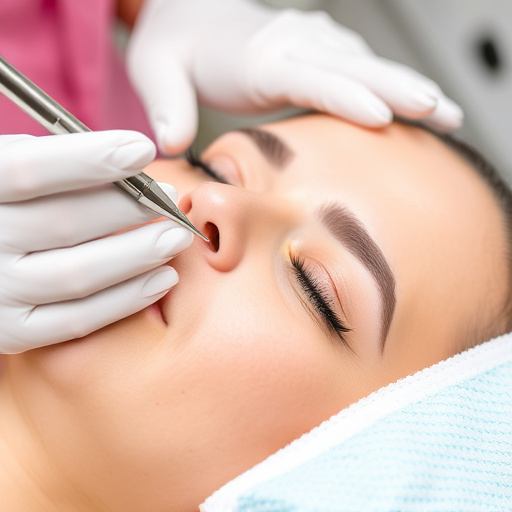
To prevent razor bumps in the long term, consider incorporating some smart strategies into your daily routine. One effective tip is to always exfoliate gently before shaving to remove dead skin cells that can cause ingrown hairs. Using a mild exfoliator or loofah pad can help smoothen your skin and reduce the risk of irritation. Additionally, opting for closer shaves instead of lighter strokes can minimize hair traps, a common cause of razor bumps.
Beyond these basics, invest in regular hydrating facials to nourish and strengthen your skin barrier, making it less susceptible to damage. For those seeking more permanent solutions, laser hair removal offers a game-changing approach to ingrown hair prevention. By targeting the hair follicle, it reduces hair growth over time, eliminating the need for frequent shaving. Moreover, as an added benefit, effective laser treatments can also contribute to wrinkle reduction, providing smoother, softer skin.
Razor bumps, caused by ingrown hairs, can be a persistent issue, but with the right approach, prevention is achievable. By understanding the causes and impact of razor bumps, individuals can opt for effective short-term treatments offering rapid relief. Additionally, implementing long-term prevention strategies, such as maintaining good skin hygiene, using appropriate shaving techniques, and choosing suitable skincare products, will help minimize future occurrences. Integrating these practices into daily routines ensures a smoother, more comfortable shaving experience. For those seeking specific solutions, exploring advanced razor bump treatment options available in the market can provide lasting results.
